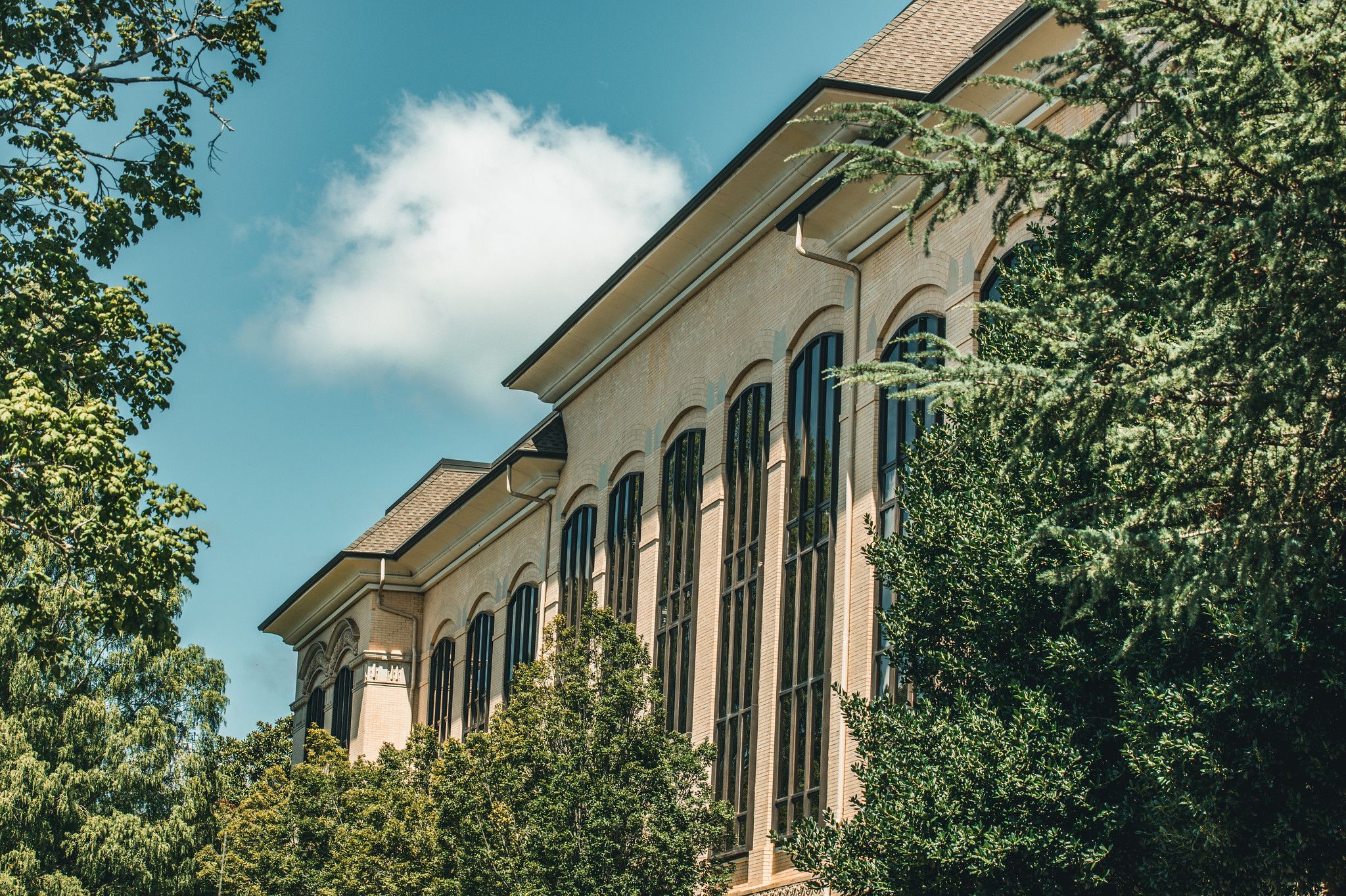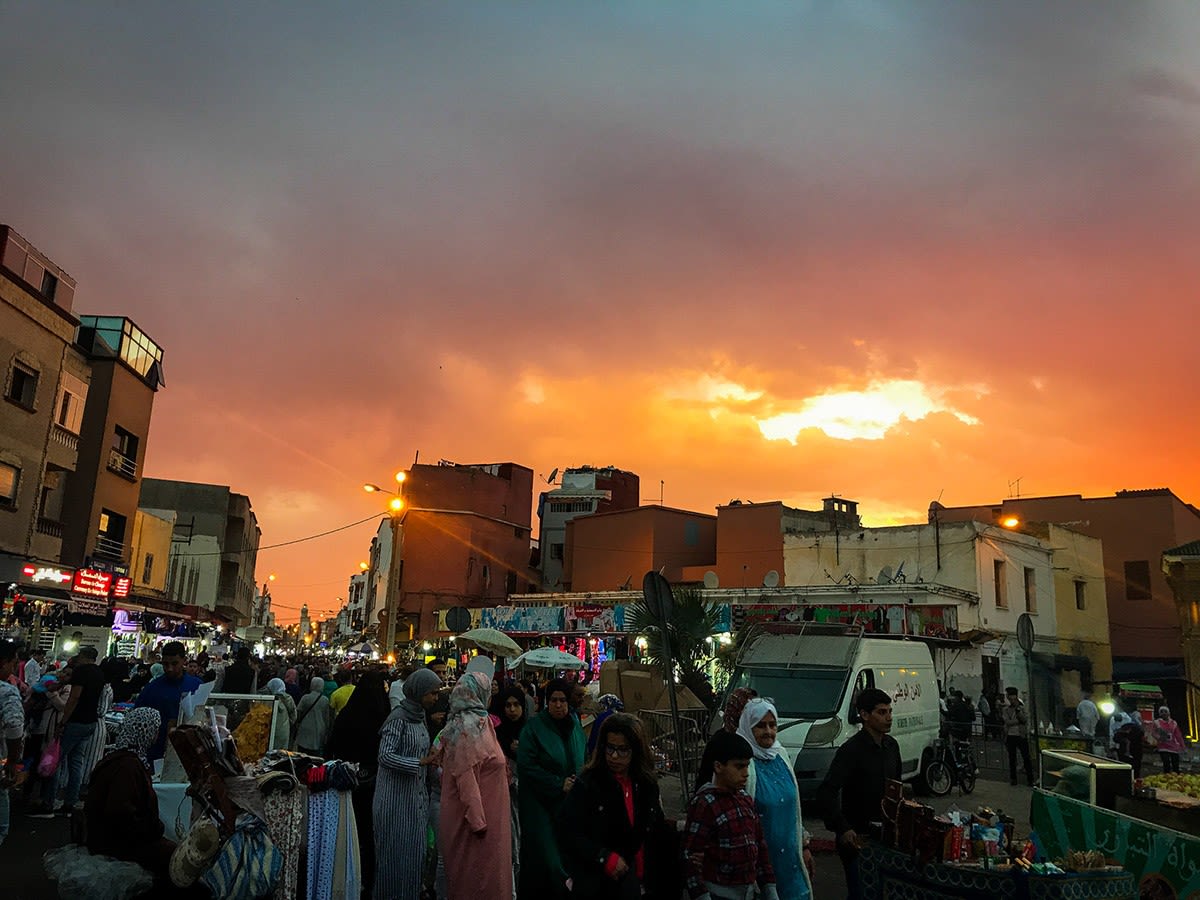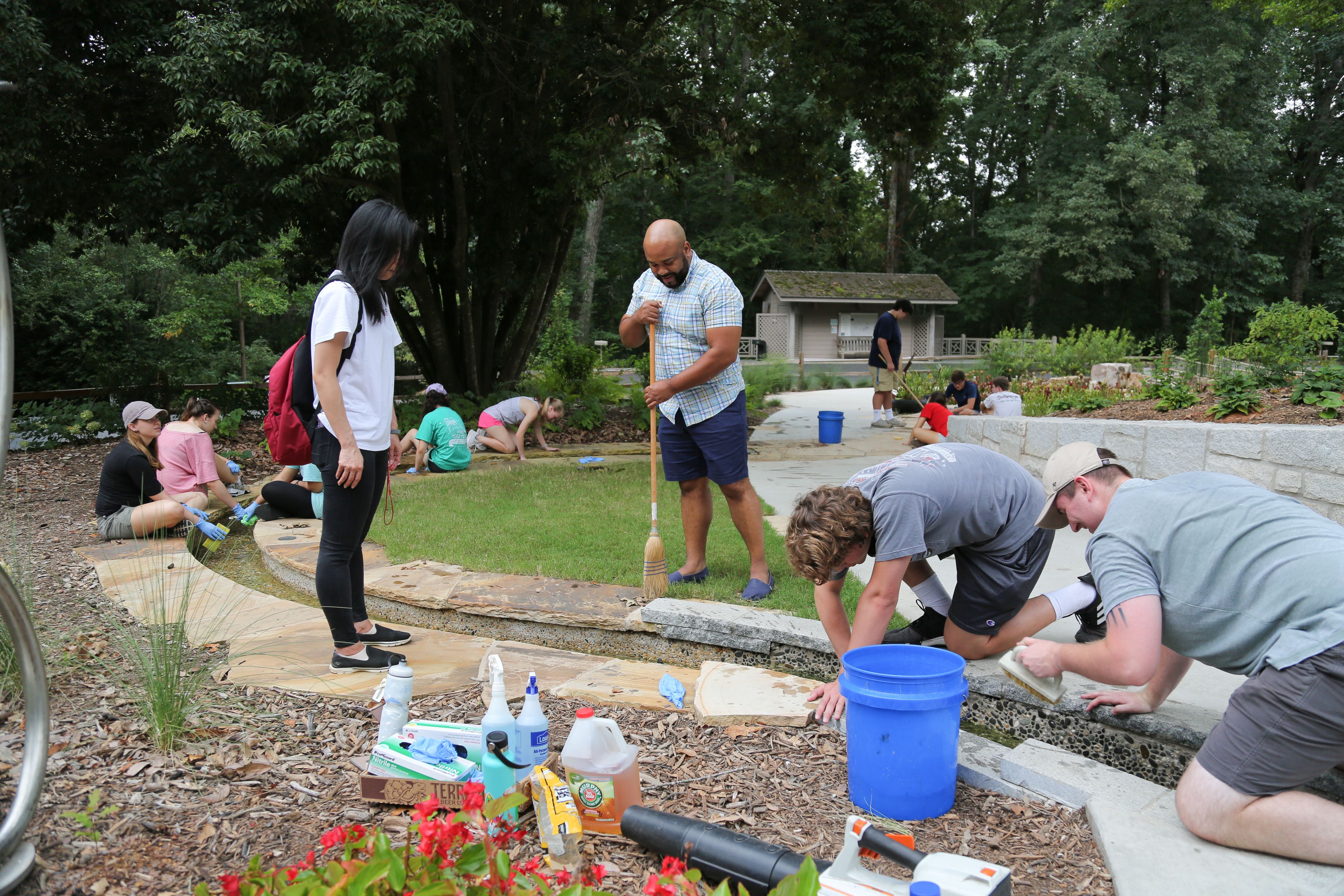James C. Anderson II
Associate professor, Department of Agricultural Leadership, Education and Communication

James Anderson, graduate coordinator in the Department of Agricultural Leadership, Education and Communication, appreciates the importance of diversity recruitment efforts at universities, but he says support of diverse populations cannot stop with a college acceptance letter.
“One of the things that we run into with diversity initiatives is that there’s this recruitment of diversity but then the organization doesn’t know how to accept the difference,” said Anderson, who has built his research and teaching around strategies that he hopes will fundamentally change how people handle issues of diversity, equity and inclusion.
Planting the seed
Anderson was introduced to agriculture when his parents decided that he should attend the Chicago High School for Agricultural Sciences, a small magnet school in the Mount Greenwood neighborhood on the far south side of Chicago. Living in the inner city, Anderson's parents thought it was the safest environment for him.
“It is a comprehensive school — students could study food science, animal science, agriculture and biotechnology, horticulture — and so we began to get a sense that agriculture is very broad and that there are all of these wonderful things we could do,” Anderson said. “For four years I studied agriculture and was a part of a student leadership organization, winning all these accolades and meeting political figures who were associated with agriculture. I had this false sense of safety and belonging.”
Anderson got an inkling that his experience at the school was unique when he was elected to serve as a youth ambassador for agriculture after his senior year in high school. The role called for him to travel the state for a year, speaking at schools and businesses about the importance of agriculture with a team of other youth.
Because he was the only Black student ambassador, administrators decided that Anderson would be safer and more impactful if he only traveled to schools in the northern and central portions of the state, where the populace was more diverse.
Although he did not outwardly question why he was limited to certain areas while the other ambassadors traveled freely, he felt it was a missed opportunity for all involved to learn from each other. The experience shaped how Anderson has approached diversity, equity and inclusion throughout his education and career.
“That really shaped me into who I am today,” he said.
Breaking through barriers
For Anderson and many of his schoolmates from high school, the transition to college brought the reality of being a member of an underrepresented minority in higher education sharply into focus.
Anderson, who matriculated at the University of Illinois, the 1862 land-grant institution in his state, said he and his former schoolmates often faced being the only person of color in their academic programs.
“We were students from a world-renowned urban agriculture program who had scholarships to attend land-grant institutions all across the country to study agriculture, and many were leaving these programs because they didn’t feel inclusive,” he said. “Some of my classmates discussed how traumatic and isolating their experiences were.”
Anderson said his experiences as a student ambassador allowed him to successfully navigate a system without racial diversity.
“Identity representation can serve to build confidence in underrepresented and marginalized individuals because they see that someone has been successful in that space, however I think a person can navigate a system without representation if they have access to advocates who use their power and privilege to help them make meaningful connections,” he added. “In my experience, it is only when individuals with power and privilege reach out to include you, that you begin to feel that this may be a place where I can thrive.”
Becoming an advocate
As someone who once felt his voice was taken away, he was now prepared to advocate for himself and establish connections with faculty and administrators who would help him realize his academic and professional goals within agriculture.
“Your network will determine how long you stay in that field. When there isn’t identity representation — where you can see others who have succeeded and who look like you — then you can become skeptical about whether you will be accepted and fit in."
Anderson saw how agriculture and natural resources could provide solutions to some of the economic, leadership and health problems he saw in the inner city where he was raised and became determined to help promote the field to students of color.
“I thought, why are we not studying agriculture and then bringing it back to our urban communities to make them more viable? And the reason was because there was no perceived space for students of color from urban communities to develop a passion for agriculture that felt safe and affirming,” he said. “And this perception exists because students don’t see representation or vocal advocates in universities driving initiatives to actively recruit and retain urban students. However, in recent years, some grassroots initiatives around urban agriculture have begun in local communities.”
Anderson wanted to be a part of this effort, so he started the Urban Agriculture and Life Sciences Academy, now a U.S. Department of Agriculture National Institute of Food and Agriculture-funded agricultural literacy project to train educators on culturally responsive practices.
“These trained educators will then work as a community of practice to write culturally relevant curriculum geared toward exposing urban students to agricultural and life sciences majors and careers,” he said. “The ultimate goal is to invite faculty and administrators from colleges of agriculture nationwide to join the Academy and work in concert with these school-based educators to create spaces and degree programs that will advance urban agriculture and life sciences and establish a pipeline of skilled workers in this area.”
Carving out space
Through these early experiences, Anderson developed an appreciation for how sharing his own story and the stories of others’ journeys could help foster an inclusive mindset.
“I became an advocate for diversity not as an initiative, but diversity as a way of life, and that is what we need in order to address the issues that we’re trying to address in agriculture,” Anderson said.
"If we’re homogeneous, then we miss some of the potential solutions that are out there, so I began to think about how I could help leaders and decision makers see that — although it takes a little bit more time to learn how to navigate through these differences — individuals from different backgrounds with different worldviews can bring a solution that you’ve been seeking for years.”
Anderson began to see that true equity would only be achieved when there is true inclusion of diversity, and not just an expectation of assimilation into an existing system.
“If you make these students feel comfortable, if you accept them and not try to make them assimilate to a certain system, then there will be inclusion. I wanted to be a grassroots part of recruiting students from different backgrounds — students of color, students from urban areas — helping them understand that agriculture and natural resources can be something that they bring back into these inner cities as a way to deal with issues like food deserts, economic issues, health issues, emotional well-being, etc.,” Anderson said.


Leading the charge
In 2000, Anderson graduated from the University of Illinois with a bachelor’s degree in agricultural and environmental communications and education. He went on to the Lerner School of Business at the University of Delaware, where he earned a master’s in economics and entrepreneurship for educators with a concentration in curriculum development. After graduating, he returned to teach at his high school alma mater in Chicago.
In an effort to build the capacity of high school agriculture teachers to create inclusive classrooms and recruit and retain a more diverse population of students, Anderson decided to pursue his doctorate in agricultural education after five years of teaching.
“I was beginning to burn out as a high school teacher, feeling the weight of trying to get every student I came in contact with to consider studying agriculture. I thought that if I could help teachers be more inclusive in the classroom, then the work I was doing to try to make agriculture more appealing to a diverse group of students could be magnified,” Anderson said.
“I have had both ups and downs as a person of color in agriculture, but these life experiences have help me to learn more about myself and how to navigate a diverse landscape. It has motivated me to help others seek out and lean into diverse experiences so that they too may learn more about who they are and, in return, how to appreciate and embrace the lived experiences of others.”


Rebuilding academic culture from within
At CAES and throughout the university, Anderson designs and teaches leadership development courses for students, faculty and staff that incorporate truly inclusive practices.
“I am not making it an intervention, but a worldview. We need to find the best of many different types of people so that we can come together as a team and address the issues that we need to address,” he said. “Do I feel more comfortable with people like me? Yes, but that’s not always going to be the solution to the wicked problems that we are facing today.”
Anderson came to UGA because he wanted a faculty position that allowed him to do outreach in the community in addition to teaching and research, something he found in his appointment with UGA Cooperative Extension.
“That is the premise on which I build everything I do, from my teaching, my scholarship and my Extension outreach working with leaders and potential leaders. I want to shift their worldview as to what it truly means to create inclusive and just spaces in the hopes of finding strong teams that will solve some of these issues that we are facing,” he said. “As a college and within Extension, UGA was honestly looking for solutions to address the problems within Georgia and to create innovative ways to elevate agriculture in our college, as well as nationally and internationally.”
Finding an institution that is willing to devote resources — and not just lip service — to diversity, equity and inclusion was important to Anderson as a self-described change agent.
“I felt a connection to UGA as an institution that, at all levels, was saying that we are ready to be trailblazers and we believe that the way to do this is to acknowledge our downfalls and the lack of diversity that exists, then identify ways to actually address that.”
In choosing to work at UGA, Anderson recognized that the university was creating tangible diversity, equity and inclusion initiatives — and backing them up with funding. He explained that some institutions don't go beyond speech with actions to meet defined targets.
“UGA was the right place at the right time and my intuition told me that I needed to be a part of the change that was about to occur.”
Agent for change
Besides what he teaches in the classroom and in workshops on and off campus, Anderson seeks innovative ways to incorporate cultural diversity in his work. Although it was postponed due to the pandemic, he designed a new study abroad program at CAES focusing on agriculture, organizational and community development in Morocco. In terms of its focus and location, the program is the first of its kind at UGA.
“It may not be the first place many students may think of when they are planning to study abroad, but I believe its unique mix of European, Arabic and North African Indigenous cultures make it a perfect location to explore diversity, equity and inclusion in the context of agriculture,” Anderson said.
Planned for May 2022, the experience includes visits to farms, agribusiness operations, and historical and archaeological sites that showcase the nation’s culture, history and agricultural production.
“With the Morocco trip, I’m not saying ‘Come here because I want you to change your worldview about religion and about culture.’ I say, ‘Come here and experience some things that you haven’t experienced before and, once you’ve experienced them, let’s sit down and have a conversation about what you’ve experienced, what you’ve learned and what you want to do next,’” he said.
Peer mentorship
Anderson takes the same approach in the leadership classes he teaches to students from across the university.
“Every course has a unit or an experience where students will have to deal with social justice, identity and equity; it’s embedded in the class. And the way that I teach is that we learn, we practice and then we go out and do. At all levels — undergraduate, master’s and doctoral students — they will at some point have to go out into the community and practice a concept of diversity, equity and inclusion,” he said.
At the institutional level, Anderson provides leadership and mentorship training built on the framework of transformative mentoring — developing relationships between the mentor and mentee via conversations about identity, goals, values and perspective.
“I bring in assessments where we can look at your personality and, looking at that personality profile, begin to have conversations about what makes you unique. Then we can look at the person next to you who is different, and think about how to navigate those differences to collaborate in meaningful ways. Once you are open to expressing yourself, we can then bring in the things that we’re scared to talk about — components of identity such as race, religion, sexuality and so forth — because we’ve already created a space where we can have authentic conversations,” he said.
In this way, diversity, equity and inclusion become a more natural part of the thought process for everyone, rather than a task to be accomplished by a certain person or the function of an office.
James Anderson and the students in his service-learning class do a cleanup at the State Botanical Gardens. (Photo by Shannah Montgomery/PSO)
James Anderson and the students in his service-learning class do a cleanup at the State Botanical Gardens. (Photo by Shannah Montgomery/PSO)
“Through leadership education, I’m able to work with people before they get into a leadership role and we can discuss how they plan to create these places that are equitable and inclusive, that really define diversity in many different ways and are not limited to the traditional areas of race and religion and gender,” Anderson said. “Diversity, equity and inclusion is not a conversation by itself. It is an experience that is supported by conversation.”
Embracing the uncomfortable
Anderson acknowledges that conversations about diversity, equity and inclusion are often difficult and uncomfortable because they require people to expose how they think and how they feel and to share the experiences they have had.
“In a diverse society, there are going to be conversations that are uncomfortable, but it is wrong only if we don’t learn from them. If you never ask a question, you will never know the answer. If you ask that question and you offend someone, but you talk through that offense, that is a lesson learned, and aren’t we then becoming more aware and more sensitive? Isn’t that the purpose?” Anderson asked.
“I tell my students that these conversations are yucky, they offend people, but if you’re going to commit to having them, you have to know how to take them from the beginning to the end. Those conversations are never pretty, but they are conversations that should be had,” he added.







